How do you Grow Marigolds?
This question can be difficult for beginner flower gardeners because of numerous factors like climate, soil, pests, and experience level.
This article will help solve this problem and give beginner flower growers Easy-to-Follow Steps on growing Marigolds ANYWHERE.
And I recommend scrolling down to the bottom of the page to find answers to the 8 most frequently asked questions most flower gardeners have when growing marigolds.
#1: Choose These 4 Marigolds Types
I am recommending four general types of Marigolds Plants when learning how to grow marigolds from seed.
These are the easiest marigolds to grow from seed and plant. Also, they will attract the most amount of pollinators.
1. French Marigolds
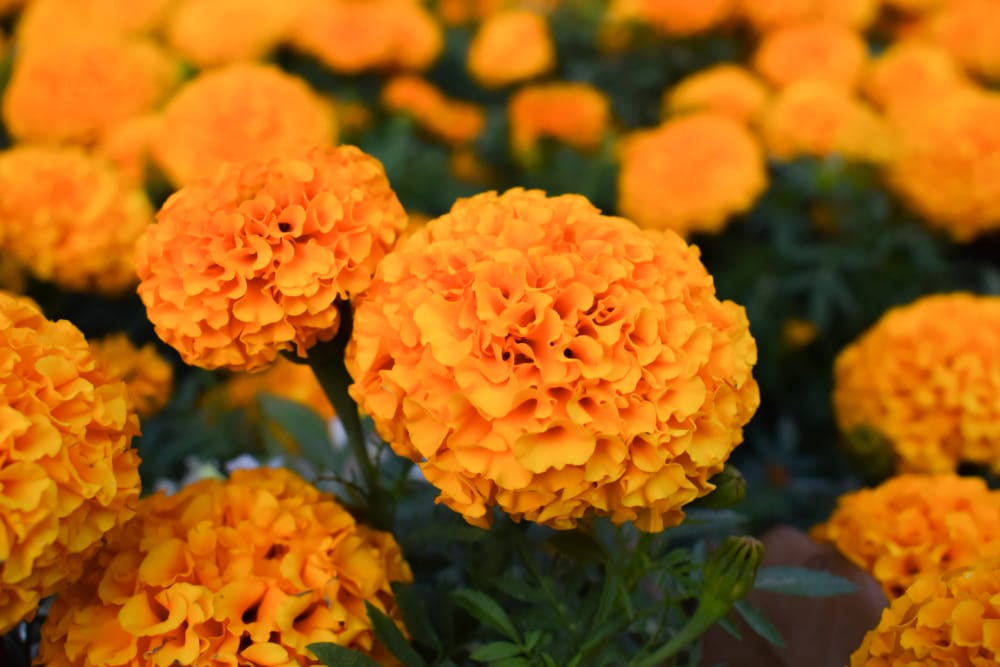
- French Types: Bonanza, Janie, Little Hero
- Blooms: Summer & Fall
- Temperature: 70 – 75 degrees Fahrenheit
French Marigolds are some of the favorite types of flowers for gardeners to grow.
This is an incredibly hardy type of marigold making it perfect for your yard, flower garden, and even garden containers.
While it will grow well in any of the listed hardiness zones, it thrives in temperatures of 70 – 75 degrees fahrenheit.
What makes this the best type of marigold to grow though is that it is easy to care for and maintain and can withstand drought and even pests like rabbits and deer.
2. African Marigolds
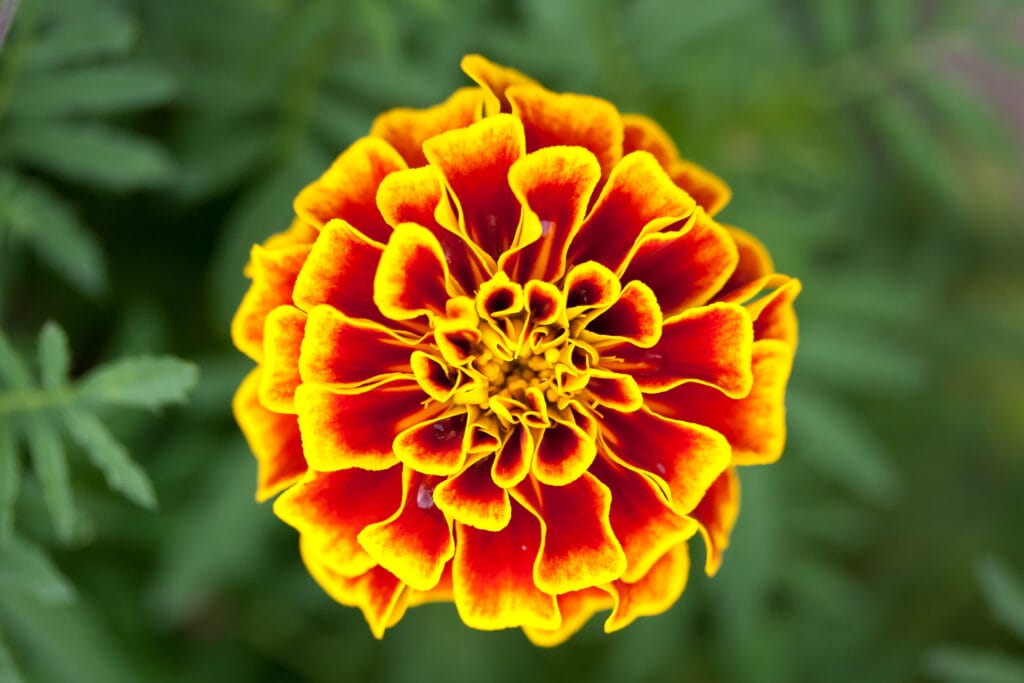
- African Types: Yellow, Orange, Double Orange, Creamy White
- Blooms: Summer
- Temperature: 70 – 75 degrees fahrenheit
The African marigold is also known as the Aztec or American marigold and is one of the most popular perennial flowers to grow because of its large blooms.
It should be planted in full-sun and it’s potent scent deters pests like squirrels, rabbits, and even deer.
These are also extremely sturdy flowers, can withstand drought and wet weather, and even can be used for medicinal purposes (like curing hiccups).
3. Signet Marigolds
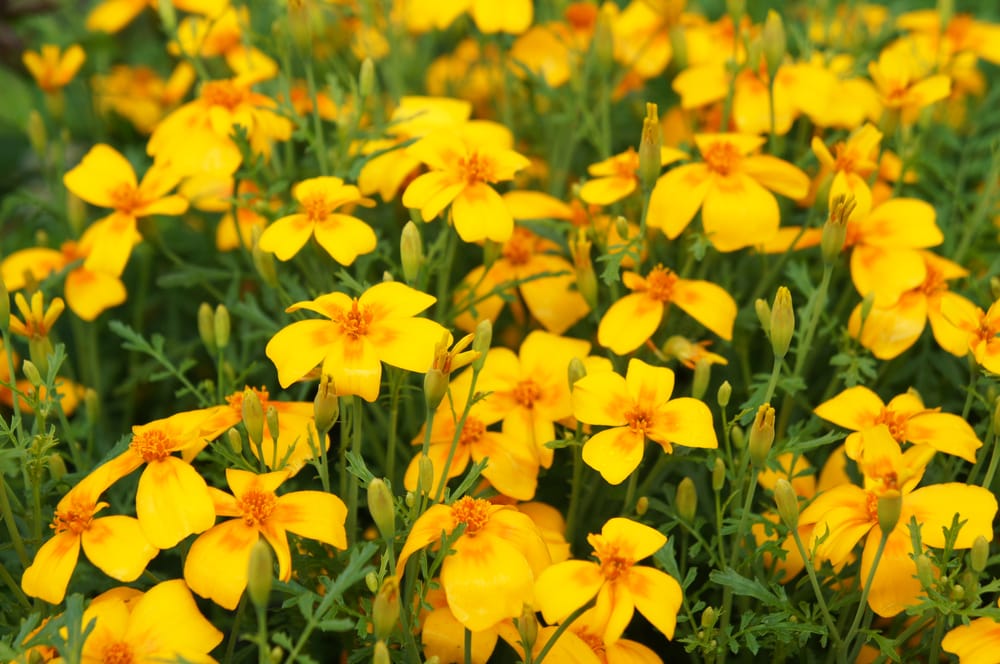
- Signet Types: Lemon Gem, Tangerine, Red Gem, Spanish Tarragon
- Blooms: Summer
- Temperature: 70 – 75 degrees fahrenheit
There is one factor that makes signet marigolds so much more unique compared to other types and that’s because it is edible and is perfect to add to salads.
What you’ll love about this type of flower is that it can literally be planted anywhere and in any type of soil, as long as there is sun.
This marigold blooms in mid-summer, is low-maintenance, and has bright yellow blooms that slowly fade after a couple of weeks.
4. Triploid Marigolds
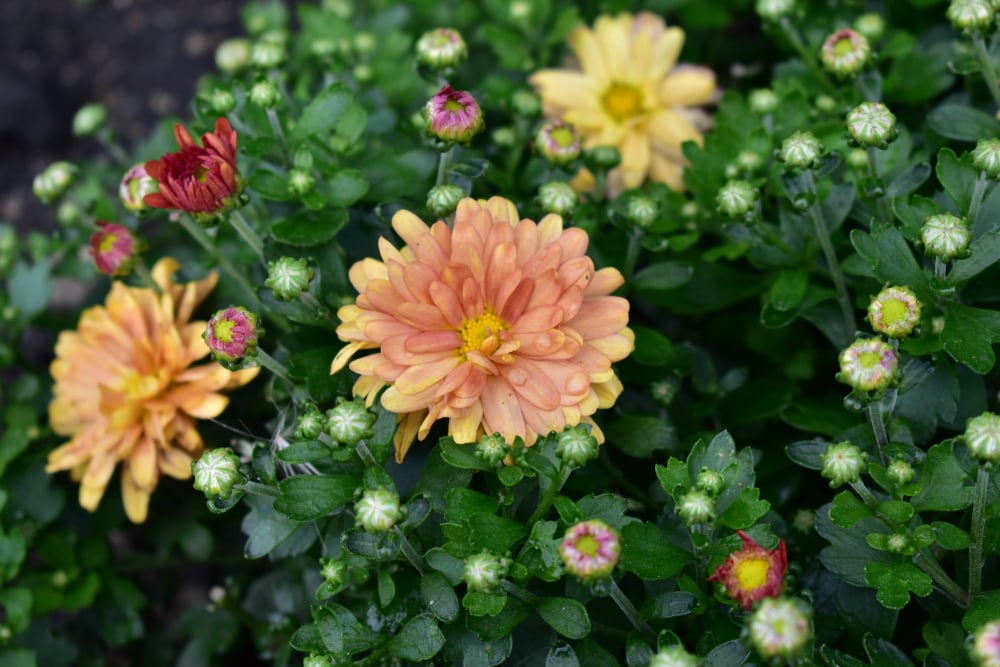
- Triploid Types: Zenith & Nugget
- Blooms: Summer
- Temperature: 70 – 75 degrees fahrenheit
Triploid marigolds are a mix between french and african marigolds.
If you live in warm weather then you need to plant this type of marigold. It is the the sturdiest type of marigold and can withstand almost any type of external environment.
One of the biggest advantages of this marigold is that it will bloom larger and longer than any other type of marigold, adding color to your yard and garden almost all summer.
Purchase the BEST Garden Supplies (Tips #2-5)
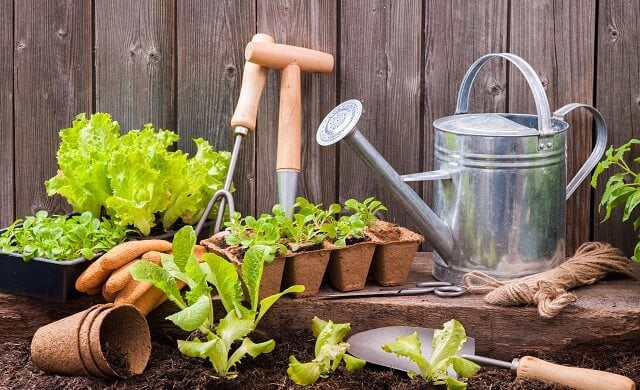
#2. Purchase the Right Seed
When learning how to grow marigolds from seed the seed itself is the most important supply.
While vegetables typically have numerous types of seeds like organic, heirloom, GMO, etc. marigolds plants typically grow from your traditional seed or organic.
Whether you purchase organic seeds or traditional seeds you will have the same results. There is no benefit to your health and your harvest will be no different.
What is important is where you purchase your marigolds seeds from.
If you want seeds that come from reputable companies at a reasonable price and with quick delivery then you want to purchase them from Amazon.
#3. Buy 2 Types of Containers
Once you purchase your seeds you will need at least 1 type of pot to start your marigolds and two types of pots if you want to garden all year.
I typically don’t recommend planting your seeds directly into the soil because disease, pests, and mother nature will damage or destroy too many of them.
Instead, I recommend starting off your seed in 3-inch pots. My suggestion is GrowKo Peat Pots.
Next, you’ll want a much larger pot if you do not plan on transplanting your marigolds into a garden.
The reason for this is that 3 inch pots are great for seeds and starting small plants, but cannot sustain the root growth needed for marigolds leaf growth.
I recommend: Viagrow 5 Gallon Nursery Pot
#4. Buy These Garden Tools!
While containers and seeds are the only two essential tools you need when learning how to grow marigolds from seed there are other garden tools that will make your life easy.
Of the most basic, but handiest garden supplies to have is a good sprayer.
You want to use a good sprayer because hoses and cups will flood your seed rendering it useless.
I recommend: Tolco Spray Bottle 8 oz.
In addition, it is also great to have good garden utensils to help minimize dirt and disorganization.
If you want one of the best gardening tool sets then I recommend Vremi 9 piece tool set.
And finally, you can’t grow marigolds seeds inside without a good grow light. If you have access to a warm sunny area for at least 8 hours a day you won’t need a grow light.
Most of us don’t have access to that much sunlight during the winter. And sometimes even if we do a grow light is just more effective for the best results.
I specifically recommend: Hydrofarm Grow Light
#5. Buy Soil & Fertilizer
Just because you have the best seeds and a pot to start your marigolds doesn’t mean you’ll have success.
You want to make sure you have the correct soil and good fertilizer.
If you do not have the proper soil your seed will not fully grow and bare leaves. And while you can survive without fertilizer, a good mixture will help you get the most out of your marigolds plant.
While there are lots of soil you can buy, we will want to focus on the only one you need, potting mix.
Very simply, this soil will contain the right mixture of soil, sand, and nutrients needed for your Lavender seeds to grow healthy.
I am highly recommending: Miracle-Gro Potting Mix.
I am recommending this type of soil for a couple of reasons.
- Everything you need to start seeds and provide your marigolds with the correct nutrients can be found in this soil.
- And if you decide you want to transplant your marigolds plant to another pot you will not need to purchase a different type of soil.
In addition, you want to make sure you have a good fertilizer to help your marigolds grow as large and fruitful as possible.
I use and recommend: Miracle-Gro Plant Food
Why I like this type of fertilizer is that it provides everything your marigolds plant needs. And you won’t have to worry about the type of mixture to use or how to use it.
Best of all is that this type of fertilizer can be used on all your vegetable and herb plants!
#6: How to Start Seeds Indoors
When learning how to grow marigolds from seed you should almost always start your process indoors.
Step 1
You will want to start your marigolds seeds inside approximately 12 weeks before you plan on moving your marigolds into your garden or moving your larger container.
You want to first start by filling your 3 inches pot 80% full with your potting mix.
Next, you will want to spray the soil immediately after 5-10 times. You want the soil to be damp, but not soaked. You will know the soil is damp when it turns a dark brown color.
Step 2
Next, use the tip of a pencil and make a circular motion to form a tiny hole. This will be approximately 1/8 inch deep.
Then place 2 to 3 seeds into the hole and brush the soil over the seeds.
You will then spray the soil again 5 to 8 times. Moisten, but do not dampen the soil.
Step 3
After planting your seeds place your pots in direct sunlight or under your grow light. Your seeds will need approximately 8 hours of sunlight.
If you put your seeds under the grow light keep it approximately 4 inches from the bulb. Anything closer will burn the seeds. Anything further away with not provides enough heat and light.
You will also need to make sure the room temperature is around 70 degrees Fahrenheit. If the air temperature does not stay around this temperature then your seeds will not germinate or pop through the soil.
If you don’t have an area that will stay consistently around 70 degrees, I would recommend investing in a Plant Heating Mat.
A Plant Heating Mat is the perfect way to keep your pots and seeds at a consistent temperature that we may not otherwise be able to. The best part about a heat mat is you just plug it in and you are all set.
Step 4
After your initial planting, you will need to spray the soil once to twice a day. You will know it’s time to spray if the soil looks a light brown color or feels dry to the touch.
It will take approximately 10 days for your seeds to germinate or pop through the soil. Do not worry if it takes a few days later as each growing situation is different.
Step 5
Continue spraying your marigolds (as referred to step 4) over the next 4-8 weeks.
Once your marigolds reaches 3 inches tall you will either want to move them into your larger containers or move them outside.
If you move your marigolds plants into a larger container you can continue to water them twice a day until they are ready to be harvested.
You should only move your marigolds plants outside if the temperature is above freezing.
While marigolds plants are cold hardy plants, consistent frost will kill them.
You can view your hardy zone below to determine your first and last frost date of the year.
When transplanting your marigolds plant into a garden you will want to dig a hole that is the size of your marigolds plant root ball (where the roots meet the soil). Next, cover it with soil and water it for 30 seconds.
It should also be noted that you will not need to thin your marigolds plant like you would with vegetables or herbs. Typically, 2-3 marigolds plants can grow in one pot without any problems. This will also give you the fullest harvest.
If you learn better watching a video then I recommend watching the below youtube tutorial:
#7: How to Care for Marigolds
Below are tips for caring for your Marigolds throughout the summer:
- Healthy Soil & Fertilizer – Inspect your soil for fungus, pests, and weeds before you plant and throughout the summer. Remove as needed.
- Insects. Specifically Japanese Beetles. They will destroy your marigolds in one day!!! If you don’t want beetles ruining all your hard work I recommend purchasing Sevin Bug Killer.
- Water. Water once a week when planted outside. Too much water will not kill your marigolds but will stunt its growth.
- Harvest Often & Early: One of the best ways to care for your marigolds is to harvest it often and early. This will help your marigolds to continue to grow and become healthier
#8: How to Prune Marigolds
Pruning Marigolds is very easy to do.
Typically, you don’t need to do anything after the flowers fall off the petals. But if you want to all you need to do is cut or prune right below the flower. It’s that easy!
Conclusion
After reading this article you should now have a much better idea on How to Grow Marigolds from seeds and how to have the greatest chance for success.
If you want to have the most success, I recommend these 8 SIMPLE Tips:
- Use one of the 5 recommended types of Marigolds for the best chance of success
- Buy the Correct Seeds. Organic or traditional doesn’t matter as much as where you purchase them from
- Buy two different types of containers to help allow your marigolds to grow to its fullest potential
- Garden tools aren’t essential, but they will make gardening easier!
- The correct soil and fertilizer can turn your marigolds from good to great
- There are only 5 simple steps for starting your seed in a pot and this should take less than 15 minutes
- Proper care for your marigolds will allow you to get the most harvest
- Properly pruning your marigolds will help promote future growth
If you enjoyed this article then please read my other articles:


